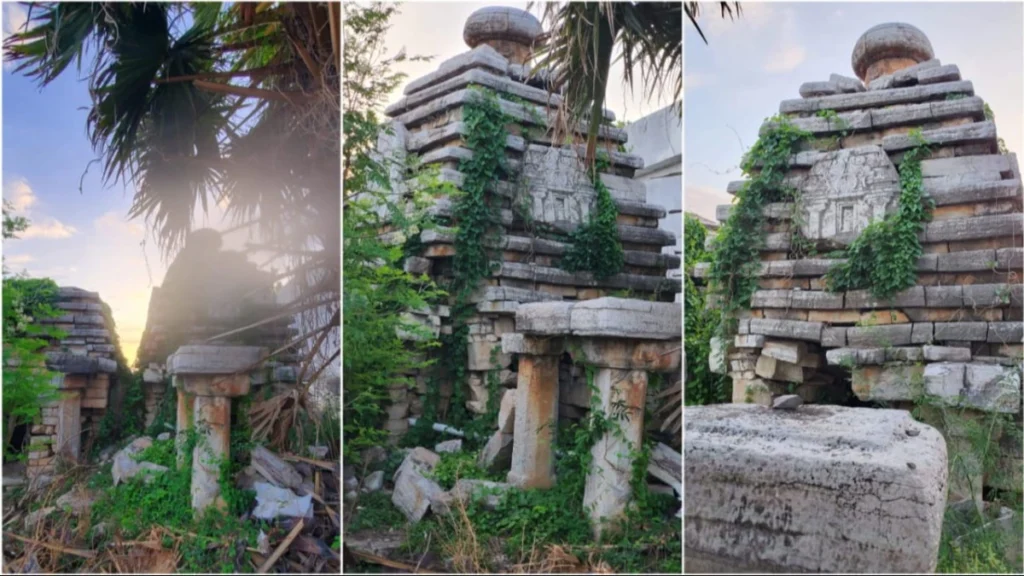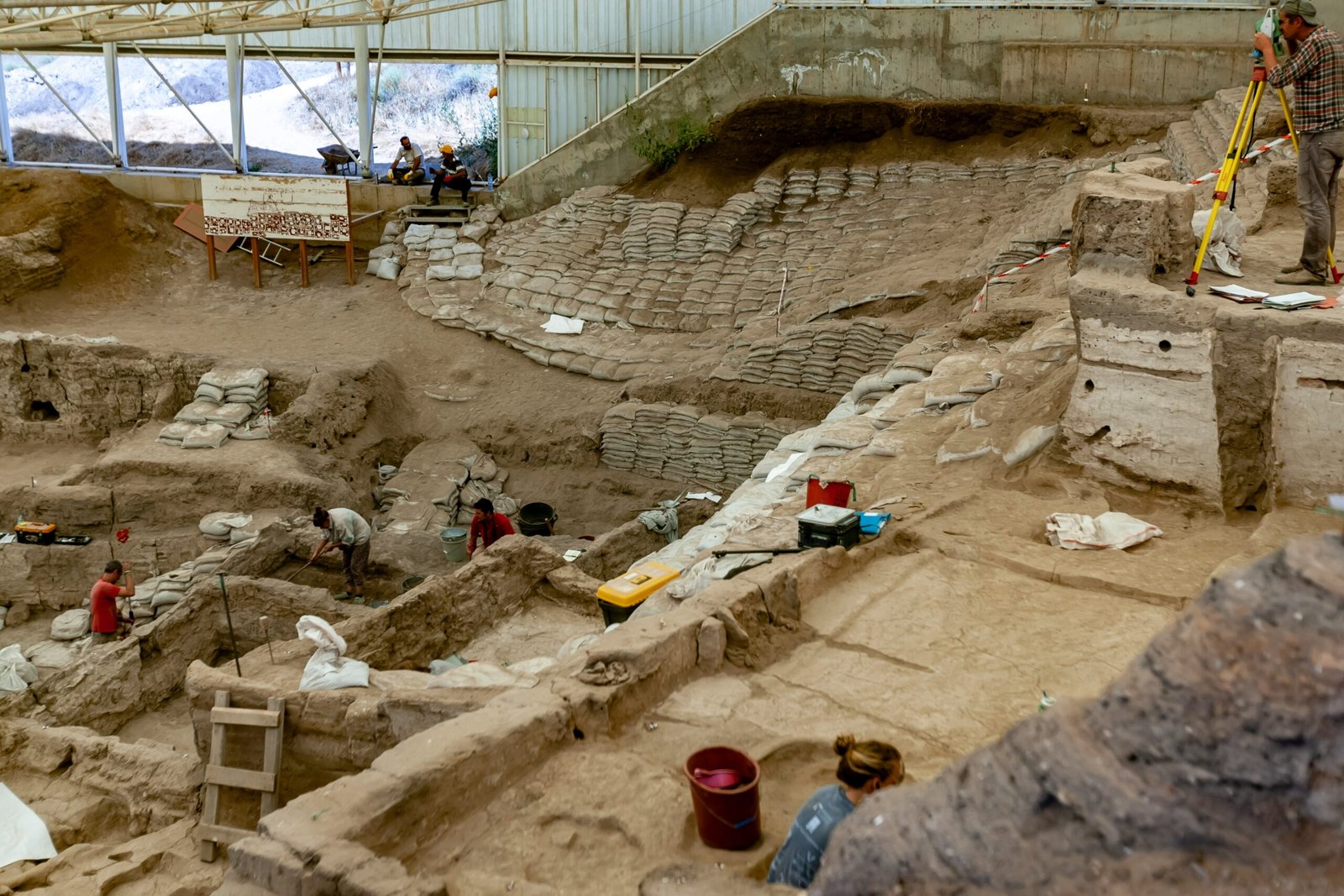1300 Years Old Temples Discovered In Nalgonda District Of Telangana
Telangana, a state in southern India, is known for its rich cultural heritage and historical significance. Recently, archaeologists made an exciting discovery in the ancient Nalgonda temple. Two 1300-year-old temples were unearthed, shedding light on the region’s glorious past and adding to its archaeological treasures. These temples have been unearthed in the village of Mudimanikyam. This village is situated along the banks of the river Krishna in Nalgonda district, Telangana. The discovery was made by a team led by Dr. M. A. Srinivasan and S. Ashok Kumar from the Public Research Institute of History, Archaeology, and Heritage (PRIHAH). These findings provide valuable insights into the region’s rich cultural heritage.

The Ancient Nalgonda Temple
The Nalgonda temple, located in the Nalgonda district of Telangana, has long been revered as a sacred site. Its historical significance dates back centuries, making it a destination for pilgrims and history enthusiasts alike. The recent discovery of two ancient temples within its premises has only deepened its allure.
Unearthing the Temples
The excavation at the Nalgonda temple site was undertaken by a team of archaeologists and historians. Their meticulous efforts revealed two temples that had been buried beneath the earth for over a millennium. The discovery has sparked excitement and curiosity among researchers and locals, offering a glimpse into the region’s past.

The Temples and Their Inscriptions
- The Badami Chalukyan Temples: believed to be over 1300 years old, exhibit distinctive architectural styles characteristic of the Badami Chalukyan era. These temples are remarkable remnants of the Badami Chalukyan reign, showcasing a fusion of the Kadamba nagara style within the Rekha nagara format—a rarity in Telangana’s architectural landscape. With minimal conservation and restoration efforts, these temples can serve as enduring testimonials to the Badami Chalukyan legacy in the region.
- Label Inscription:- The discovery of a 1200-year-old label inscription alongside the temples adds another layer of intrigue. This inscription, possibly from the 8th or 9th Century AD, features the term ‘Gandaloranru’ and is carved onto a pillar within a group of five temples. While its exact meaning remains enigmatic, experts speculate that the initial letters ‘Ganda’ in Kannada could denote ‘hero,’ suggesting a heroic title. Dr. Munirathnam Reddy, Director of Epigraphy at the Archaeological Survey of India, is currently investigating this captivating inscription.

The Architecture and Artistry
The temples unearthed at the Nalgonda site showcase remarkable architecture and intricate artistry. The craftsmanship of the ancient builders is evident in the intricate carvings, sculptures, and ornate pillars that have stood the test of time. The temples bear resemblance to the architectural style prevalent during the Kakatiya dynasty, further adding to their historical significance.

Historical Significance
Highlighting the historical importance of the Krishna river valley, Dr. M. A. Srinivasan underscores the significance of the newly discovered artifacts. Dating back to the period between 543 AD and 750 AD, these temples offer valuable glimpses into the era of the Badami Chalukyan dynasty. Regrettably, certain temples within this collection, such as one lacking a Shiva Linga and another containing a reclining Vishnu idol, currently lie neglected and unused. Nonetheless, their unearthing contributes significantly to our comprehension of Telangana’s cultural heritage.
Religious Significance
The temples hold immense religious significance for the local community and devotees. They serve as a reminder of the region’s deep-rooted spiritual heritage and the devotion of those who built and worshipped in these sacred spaces. The discovery has rekindled interest in the ancient practices and rituals associated with the temples, offering an opportunity for cultural exploration.
Visiting the Nalgonda Temple
For those intrigued by history and spirituality, a visit to the Nalgonda temple is a must. The serene surroundings, ancient architecture, and newly discovered temples make it a fascinating destination. Visitors can immerse themselves in the rich cultural tapestry of Telangana while exploring the religious and historical significance of the site.
The Badami Chalukyan period refers to a significant historical era in India, characterized by the rule of the Chalukya dynasty. Let’s delve into the details:
- Chalukya Dynasty:
- The Chalukya dynasty was a Hindu ruling family that held sway over large parts of southern and central India from the 6th to the 12th centuries CE.
- During this period, the Chalukyas governed as three distinct yet interconnected dynasties.
- Badami Chalukyas:
- The earliest among these dynasties were the Badami Chalukyas.
- They ruled from the city of Vatapi (modern-day Badami) in the Malaprabha river basin of present-day Karnataka.
- Their reign began around the middle of the 6th century.
- The Badami Chalukyas emerged as an independent force during the decline of the Kadamba kingdom centered in Banavasi.
- Their prominence reached its zenith under the rule of Pulakeshin II.
- Architectural and Cultural Legacy:
- The Badami Chalukyas left an indelible mark on Indian history and culture.
- Their Chalukyan architecture style evolved during this period.
- Notably, they built numerous Hindu temples in the Malaprabha region.
- These temples exhibit distinctive features and artistic elements unique to the Badami Chalukyan era.
- The architectural legacy includes intricate carvings, rock-cut cave temples, and structural temples.
- Spread and Influence:
- While their capital was in Badami, their influence extended beyond Karnataka.
- The Badami Chalukyas played a pivotal role in shaping the political landscape of South India.
- Their empire consolidated territories between the Kaveri and Narmada rivers.
- This period witnessed efficient administration, overseas trade, and the birth of the Chalukyan architectural style.
- Literary Patronage:
- The Badami Chalukyas supported Kannada literature during the 9th century.
- Royal patronage encouraged literary works in both Jain and Veerashaiva traditions.
Conclusion
The unearthing of two 1300-year-old temples in the ancient Nalgonda temple has added another chapter to Telangana’s rich history. These temples not only showcase remarkable architectural and artistic achievements but also offer a glimpse into the religious practices of the past. The discovery serves as a reminder of the importance of preserving and studying our cultural heritage, ensuring that future generations can appreciate and learn from the treasures of the past.





Pingback: 8 Mysteries of Jagannath Temple Puri Revealed: Science Fails Here Everyday